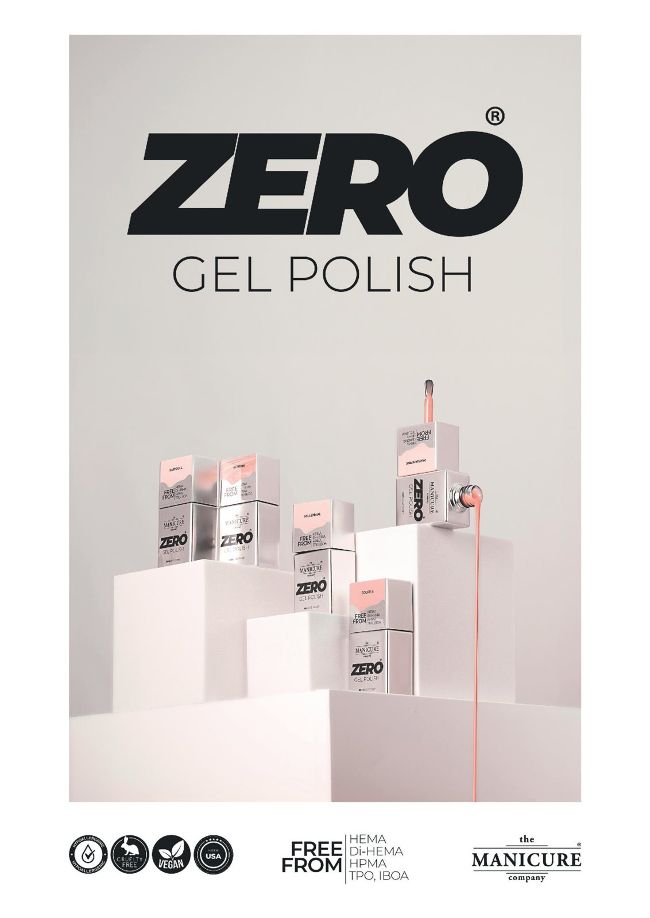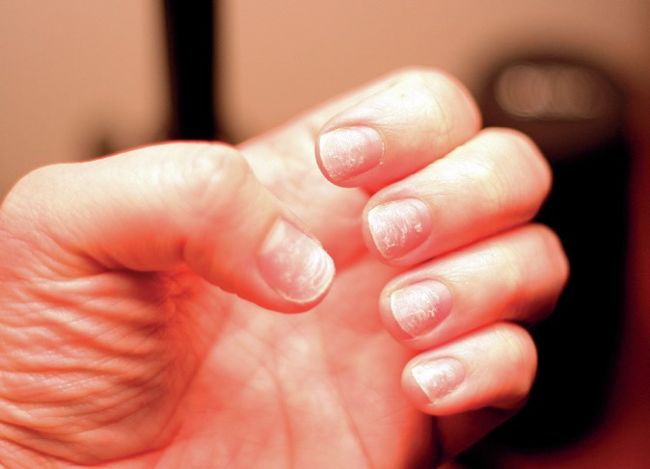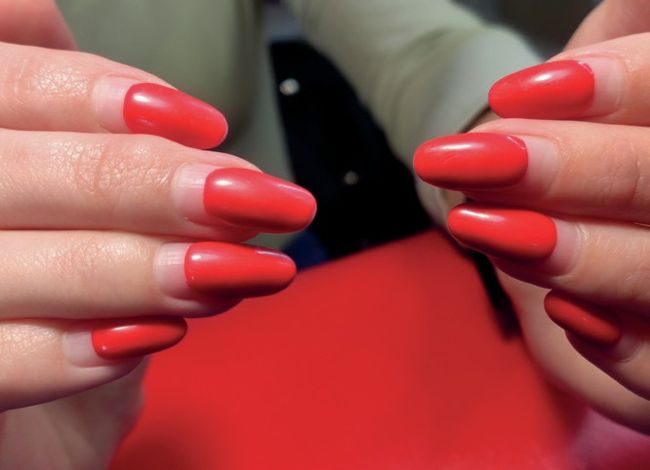THE TRUTH about NAIL CYCLING
‘Nail cycling’ is a recent social media trend that advocates taking breaks from regular nail enhancements. Kezia Parkins talks to the experts about what's involved
While nails don't physically need to breathe, nail techs often find themselves up against the argument that they need a break from enhancements, which could actually be working to protect clients’ nails. The latest iteration of this is a trend called ‘nail cycling’ or ‘gel cycling’. Like skin cycling, which is the practice of periodically using different active ingredients to avoid reactions and enhance results, nail cycling involves giving nails a chance to ‘recover’ from gels, acrylics or other enhancements, while using products that concentrate on improving nail health.
“It's not just because nails don't have a set of lungs that most nail techs would say they don’t need to breathe,” says OPI education director Belinda Price. “Some clients start getting enhancements to act as a barrier or armour for nails that would otherwise break and struggle to grow.
“I've been doing nails for 30 years, and every January some clients come in, they've got an hour-and-a-half appointment for a set of acrylics and they say ‘I'll just have them off and let my nails breathe’. You see your busy day, with its decent financial turnover, vanish in front of your eyes.”
While it's not what a nail tech wants to hear, there are occasions when nails could do with a bit of a break from harsher enhancements – however, increasingly there are more products to help support this.
On a break
“The only time I would advocate taking a break from gels or enhancements is if there is an existing nail condition or a contraindication – whether that's caused by damage, incorrect filing, a tear in the nails, an allergy or incorrect removal,” continues Price. “In particular, if there is a contraindication, we cannot see that client and must refer them to a GP.”
Salon System educator Ruth Atkins agrees. “I only ever recommend taking a break from gel nails if something goes wrong – otherwise, I see no benefits to taking a break. As the nail is constantly growing, you are really only working on the new growth area.”
“There is a common misconception that you need to have a break from gel every now and then to let nails ‘breathe’,” says celebrity manicurist Robbie Tomkins. “This isn’t the case as nails are made up of keratin, effectively dead cells pushed out from the cuticle where the nails grow.
‘Some clients start getting enhancements to act as a barrier or armour for nails that would otherwise break and struggle to grow’
“There really isn't a suggested time frame to take a break from any gel nail treatments – it's more about personal preference. If treatments, including polygel, builder gel or any other nail enhancements, are removed correctly by a professional, then damage to the nail bed is minimal, and a break isn't necessary. If, however, a client experiences painful or sensitive nail beds or thin, brittle nails that break easily when having gel removed, perhaps it's time for a break.”

“I asked my fellow nail techs on social media for their opinions on nail cycling, and we all agreed that every client, along with their wants and needs, is different, and we all adapt to these,” says Kelly Marie Daly, head educator, The Manicure Company and owner of Kelly Marie Nail Academy, Charleville, Co Cork. “Sometimes we will take the product off to give the nails a few weeks' break, before putting it back on again. This may not be necessary, but if it's what the client wants, we will do it. However, if I believed the client needed to take their nails off for a period of time, I would advise it.”
According to Price, if clients have got sore nails for any reason, whether it be from over-filling or buffing, as long as damage has not gone through the nail plate, it could actually be better for that client to have product on the nail to stop it being painful.

INCORRECT PRODUCT REMOVAL CAN LEAVE NAILS IN NEED OF REPAIR
“If it's safe to do so, even in those circumstances, I would say get a coating on the nails because it protects the nail as it grows out. If the nails are damaged, as nail techs we have to educate the client, explaining that what came before perhaps wasn’t safe or sustainable for their nails. If you get them to that place of understanding, then you can work with them to improve the condition of the nails.”

ENHANCEMENTS CAN PROTECT CLIENTS’ NAILS, ACTING AS A BARRIER
Give me strength
While nails are essentially dead keratin, as Tomkins explains, they are still porous, meaning nail-strengthening treatments and products such as cuticle oils, moisturisers and serums can penetrate the nails to soften and strengthen, and help avoid splitting and breakages.
The nail cycling trend has inspired the rise of the medical or prescriptive mani, leading to a wave of new treatments to solve various nail ailments. There is also an increased focus on ensuring clients are using products like cuticle oil.
‘I only ever recommend taking a break from gel nails if something goes wrong – otherwise, I see no benefits to taking a break’
If a client wants a break from all enhancements on their nails, Price recommends a natural nail manicure with a strengthening product built in. “For these clients, I recommend they book in for a weekly service,” she says, noting that during these times of gel or acrylic abstinence, there can be an opportunity to actually increase revenue by seeing your clients more regularly.
Of course, prevention is better than cure. “To avoid having to detox a client’s nails, try to limit chemical usem” says Atkins, who recommends a filing system for removal. “Full removal is a good time to evaluate the health of the nail. If a detox is recommended, prescribe plenty of oils and serums to use at home, keep the natural nails short and book the client in for a natural nail manicure instead in the meantime.”
While many of these products can be used to enhance and add value to treatments, they can also be retailed to your clients to use on new growth areas, while wearing a professional product or while on a detox/break. So even if a client wants to pause their regular nail service, they can continue to invest in their nail care.
The bottom line
It’s easy to become concerned about new trends coming in and impacting demand for nail services. Plus, the focus on nail allergies and UV gel lamps has caused a lot of panic, which has pushed the likes of nail cycling and prescriptive manicures to the fore.
As Price puts it, if you have a client who one day declares they are never having gel polish again, but still wants to keep getting their nails done, there is no point trying to convince them of what you know to be true. The best thing to do is offer them another service that will keep them happy and could potentially boost your revenue.
“There is always something new being talked about, but I will continue to use my own knowledge, and not a trend, to advise clients on their nail care,” says Kelly.